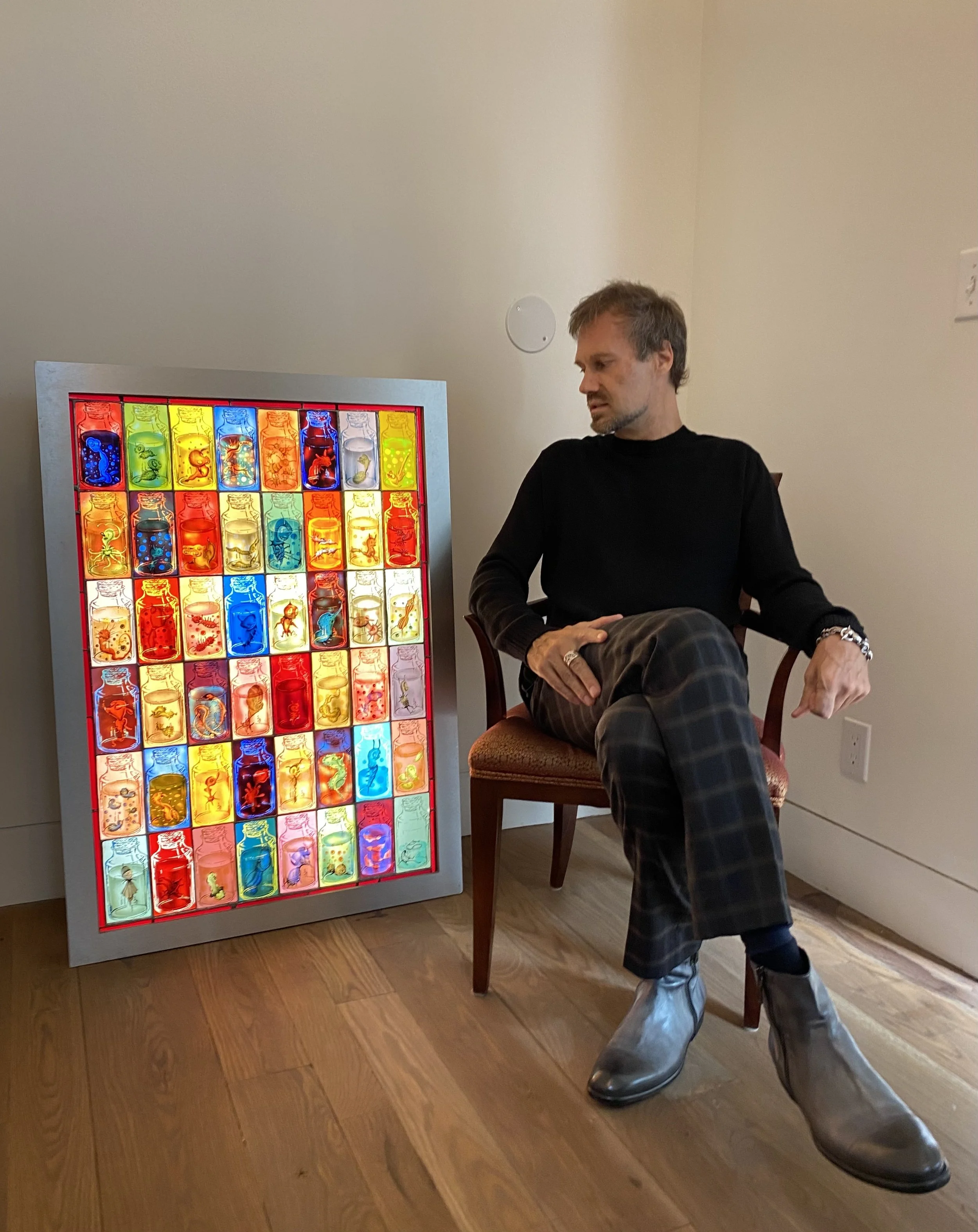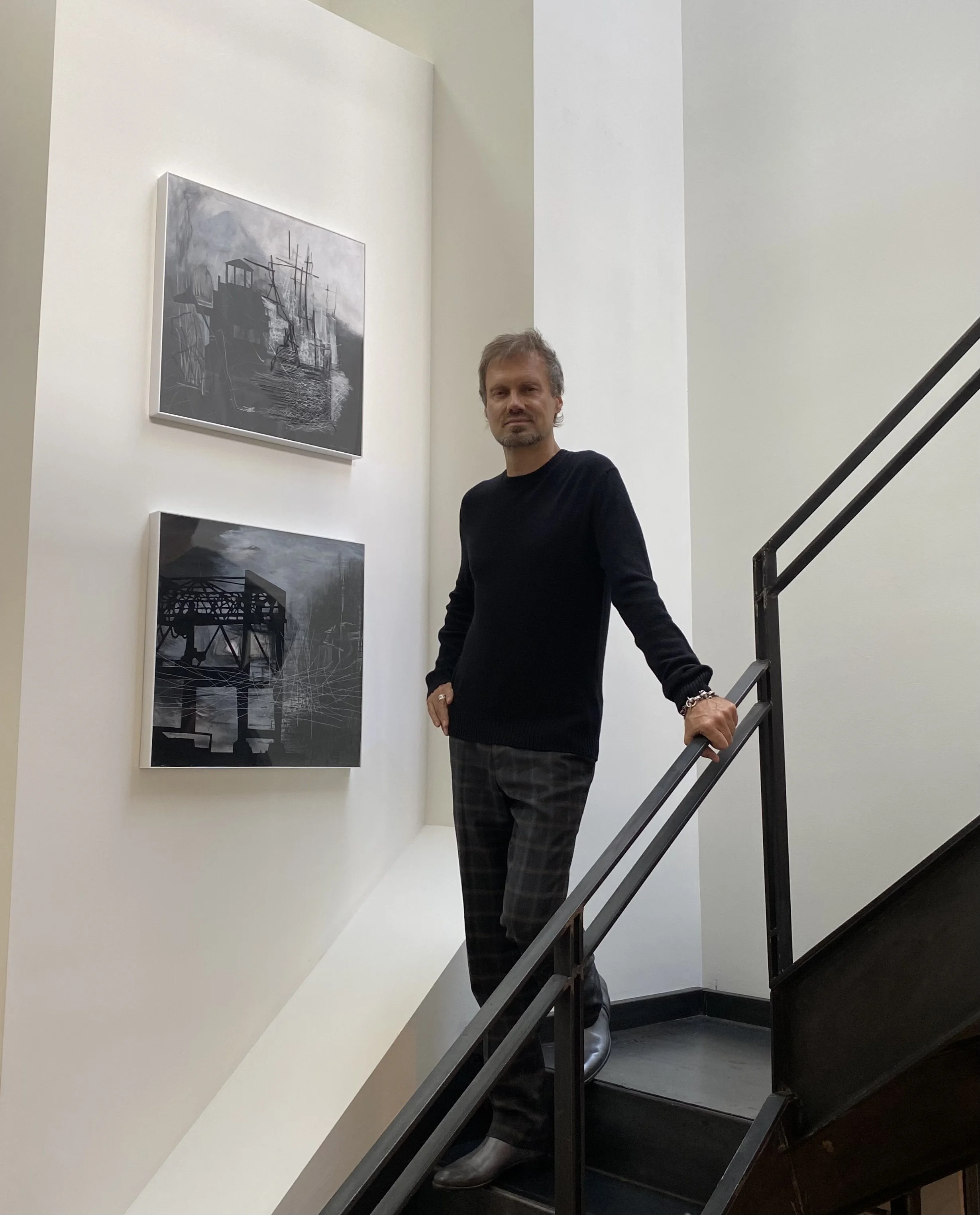Rockstar Art Collector
ALEX SKORA
INTERVIEW WITH ART COLLECTOR ALEX SKORA
ALEX SKORA
LES COULEURS: If you could steal one work of art without getting caught, what would it be?
ALEX SKORA: Twombly's "Say Goodbye, Catullus, to the Shores of Asia Minor". It's in the Menil Collection in Houston and is not only a tremendous piece, but the act of thievery would need to be of such operational genius that it would be the undisputed Thefts of Thefts. Because at the end of the day, it's more about the thrill than the kill.
LC: What work do you wish you had bought when you had the chance?
AS: There are more works that I wish I'd bought if I had the money—but that's the ultimate relative statement, isn't it?
LC: Tell us how did you start collecting art? What was your very first purchase?
AS: My parents were art collectors, but their sensibilities were more traditional and classicist. Nonetheless, their collecting somehow seeped into me, as our parents' influence will do. The first piece I bought was "Ikariad" by Zbigniew Blukacz, a Polish painter that I discovered in a gallery in Poznan. It was a piece that intuitively reflected the Zeitgeist in Poland at the time he painted it. I've had it ever since purchasing it in 1990, and I now have it hanging on my bedroom wall. While I happen to be half Polish, I'm not sure what my decision to start and end my day with post-Soviet Polish existential angst says about me.
LC: What was your happiest moment being involved in art?
AS: I occasionally host art events that bring together artists that work in different mediums and have them collaborate on pieces together. It's very free-form, improvisational, and low-pressure. Everybody hangs out, drinks a bit (sometimes more than a bit), and then has fun collaborating. The creation of art is generally a solitary process, so the artists appreciate the opportunity to work with other artists in a supportive and collegial way. It's basically a jam session with canvas and paint. None of it is about money, it's just about making art and bonding. Those evenings always end with a smile for me.
LC: What was your most recent purchase?
AS: A piece by Brooklyn artist Jay Riggio that I bought literally on the eve of the pandemic. After I brought it home, my daughter expressed her approval, so I know that I now have at least one honest vote of encouragement for the acquisition.
LC: How are you discovering new artists these days?
AS: It seems like the best way to discover art in person during the past year or so has been on a bicycle checking out street art, because the online format doesn't really work—at least for me. But galleries are starting to open up again, and the mask does make for a perfect art world style accessory. I think that it should be mandatory even for post-pandemic art events because it may force some people to say less.
Alex Skora
LC: What is your art-world pet peeve?
AS: The awful preciousness of some of the interactions in that world. I'm not a fan of blathering pontifications about the hyperbolic meaning of a work of art. I am a simple person. I like what I like. Don't try to use a long sentence to convince me otherwise.
LC: Tell us about Love Crushed Velvet.
AS: LCV is my vehicle for musical collaboration and expression. It's "band" in the same way that Nine Inch Nails or Bright Eyes are a band—a songwriter acting as a hub for whoever wants to collaboratively step into a borderless space and see what happens. I've released a good bit of material through Love Crushed Velvet, written even more, and have now started collaborating with digital visual artists to make music videos in virtual reality. I'm a horrendously inept and highly reluctant self-promotor, so most of what I release enters the world without a great deal of fanfare, but it's still rock and roll, so if you let your guard down it might hit you. If I were to be struck by a bus tomorrow, I'd enter the afterlife feeling that I'd created music that I'm genuinely proud of. If you're bold enough to click "play", lovecrushedvelvet.com will keep you busy for an hour or two.
ALEX SKORA




